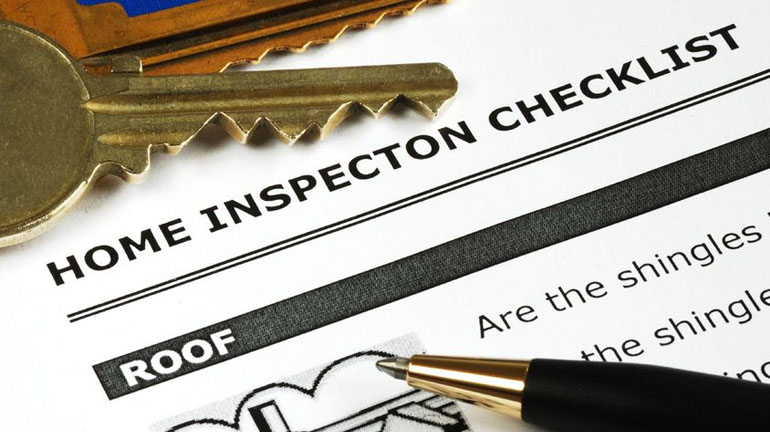Home Inspection Tips: What to Look for During Your Home Inspection
Before making an offer on a home, Westside LA real estate experts recommend conducting extensive inspections. Home inspections are designed to protect you from unexpected repairs and costs after move-in. If any problems are found during a pre-sale inspection, the buyer can then negotiate with the seller to have the issues resolved before closing or incorporate the cost of repairs into the offer. By assuring the buyer that they are purchasing the best home for their money, home inspections are an invaluable resource in the home buying process.
In most cases, home inspections analyze a number of factors both inside and outside the home. We begin with the six most critical inspection concerns for the exterior of the home.
Home Inspection Exterior
Foundation
The most important thing to check for in the foundation are cracks. If any cracks or irregularities are noticed in the foundation, a further inspection may be needed to check the integrity of the construction.
Roof
When the roof is inspected, it must first be determined if any leaks are present. If the roof is free of leaks, a proper inspection will then attempt to determine if the roof possesses any flaws that could cause leaks in the future. During inspection, it is also important to notice if any large trees hang over the home. Wet leaves from such trees can sometimes cause serious problems for homeowner.
Drainage
The most important thing to consider is how the home is situated on the property. To ensure adequate drainage and prevent flooding in the home, the surrounding land should slope away from the home and 6-8 inches of the concrete foundation should be visible. Additionally, all gutters and drainage spouts should be angled away from the home.
Windows and Doors
Besides looking for broken glass, a check of the windows should cover many factors. Ideally, all windows should open and close properly with a good seal, be free of rot around the window sills and have all screens intact. Similarly, all doors opening to the exterior should open and close properly with a good seal to prevent extra heating and cooling costs.
Siding, Trim, Gutters and Paint
An inspection of the exterior siding or paint should check for the presence of bubbling or peeling. Also, all exterior fixtures that do not impact the structural integrity – such as ornamental trim and rain gutters – should be checked for overall condition.
Decks and Porches
If the home has a deck or porch, the inspection will try to uncover the presence of rot or insect damage.
Home Inspection Interior
Now, we will look at six factors that should be thoroughly inspected within the interior of the home.
Walls, Floors and Ceilings
All walls, floors and ceilings inside the home should be checked for the presence of water damage – usually present as mold or other stains – and signs of insects or pests. The areas near plumbing fixtures should be given extra attention to check for mold and water damage, while gaps or cracks in exterior walls should be checked for the presence of insects. Lastly, all wall and floor surfaces – such as paint, plaster, wood floors, tile bathrooms and carpet – should be checked for overall condition.
Appliances
Typically, home inspectors will run one dishwasher cycle and check all functions of the oven and stove. If the home is being sold with a full set of appliances, it is wise to check the working order of refrigerators, washers, dryers and microwaves.
Electrical, Heating and Cooling Systems
These inspections of the home’s infrastructure are some of the most telling assessments of a property’s quality and, by extension, value. An inspection of the electrical system will typically test all outlets, light fixtures and circuit breakers. If it is an older home, an inspection should look for updated features such as ground fault interrupt (GFI) outlets in the bathrooms and kitchen. When checking heating and cooling systems, inspectors typically test the furnace, monitor the response of the thermostat and assess the overall ventilation of the home.
Plumbing
The inspection of the plumbing system begins with a check for leaks around all fixtures and pipes. Next, both cold and hot water pressure should be tested by turning on multiple faucets. In the bathrooms, the areas around each bathtub and shower should be inspected for water damage. Lastly, try to ensure that the hot water heater is up to code and functioning properly.
Basement
If the home has a basement, the most important thing to check for is the presence of water damage. An inspection of the basement is primarily an extension of the previously mentioned check for walls, floors and ceilings.
Chimney and Fireplace
An inspection of the chimney and each fireplace will check for loose bricks and mortar, assess the overall stability and check for obstructions within the chimney.
Keep in mind, if an inspection uncovers a problem, you should not necessarily be deterred from buying the home. More than anything, the inspection will help you determine the value of the home and prevent you from overpaying or experiencing unwanted repairs. Depending on what is uncovered during the inspection, you may want to conduct an additional inspection of the problematic element or simply work with the seller to resolve the issue as part of your offer.


No Comments